Confederate Swords and Sabers Used by the Rebels
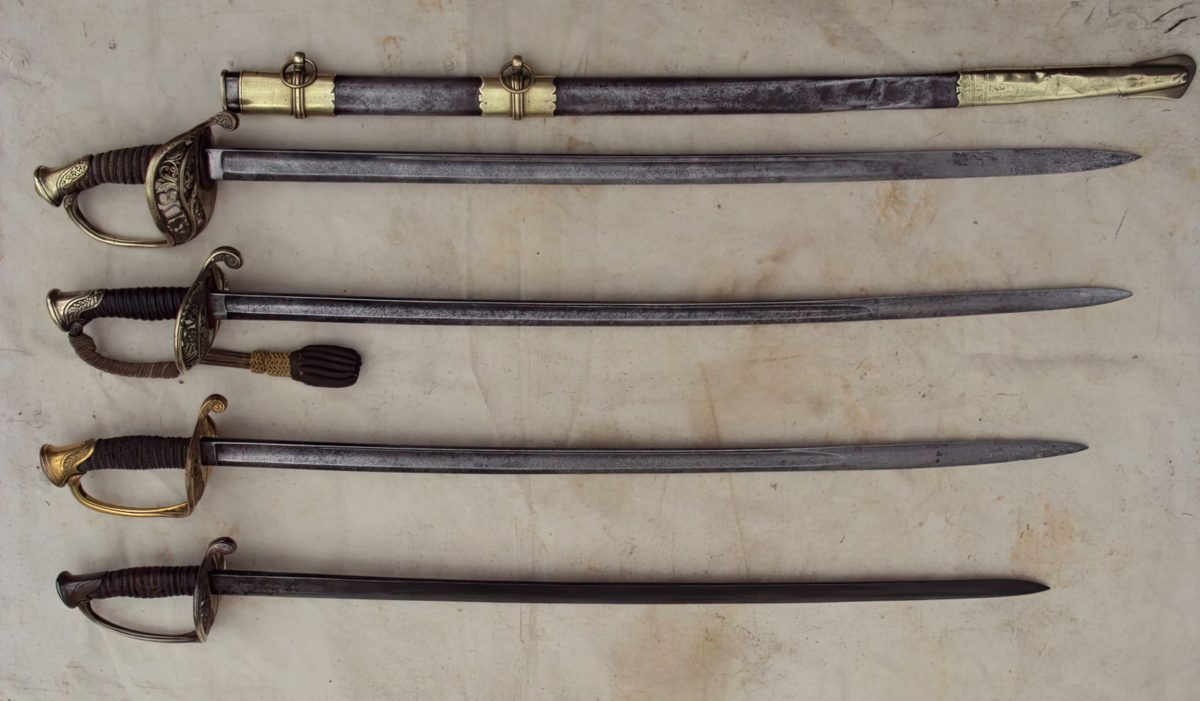
What’s in this article?
The Confederates were the rebels in the American Civil War who fought to achieve a separate and independent nation. The swords used by the Confederate have always interested collectors of edged weapons. Some were manufactured within the Confederate States while others were seized from the enemy or imported from abroad.
Let’s explore the most popular Confederate swords and their significance.
Types of Confederate Swords and Sabers
Throughout the American Civil War, the Confederates utilized any available weapon, resulting in a wide variety of swords.
Confederate Cavalry Sabers
The cavalry fought on horseback and the Confederate cavalrymen occasionally used sabers in a cavalry charge. Most Confederate cavalry swords were based on Union designs, though other soldiers were issued foreign swords.
Model 1860 Light Cavalry Saber
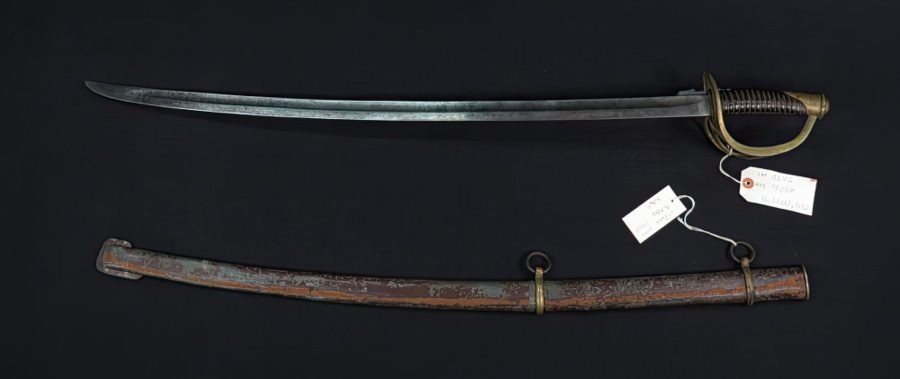
The Model 1860 Light Cavalry Saber is perhaps the most famous sword among the Confederate forces. While the Ames Manufacturing Company produced high-quality saber for the Union troops, Southern manufacturers produced copies of the saber model, often with poorer quality materials that did not stand up to hard usage. The Confederacy also used modified versions of the cavalry saber.
Virginia Manufactory Cavalry Saber

Many Confederate cavalrymen used the pre-war cavalry sabers made by Virginia Manufactory, known for their long, heavy blades with an extremely curved shape. They modernized these sabers by shortening and narrowing the blade to make them easier to handle.
British 1853 Pattern Cavalry Saber

The Confederacy imported swords from various sources, the most popular being the British 1853 Pattern Cavalry Saber manufactured in England. The brass guard often indicates that the cavalry saber was specially made for the Confederacy.
Confederate Infantry Swords
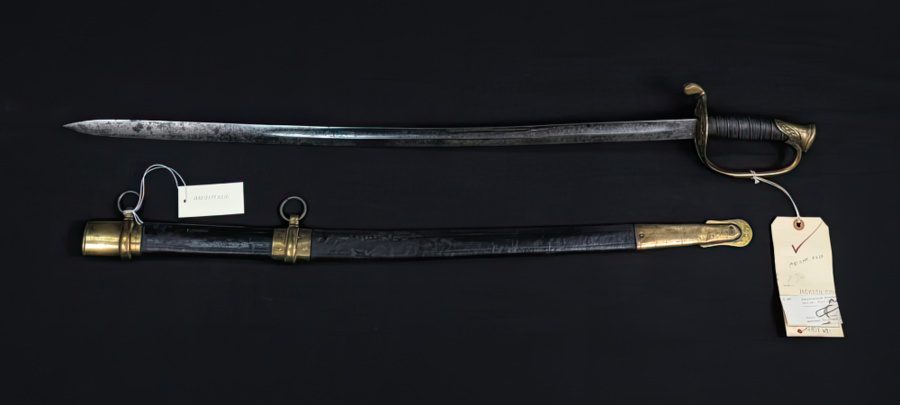
The infantry fought on foot, forming the largest part of the Confederacy forces during the Civil War. Only the officers and non-commissioned officers were entitled to wear a sword. The officers used them more as a badge of rank rather than a useful weapon.
The Confederate Foot Officer’s Sword was designed for infantry officers, usually captains and lieutenants. On the other hand, the Confederate NCO’s sword was intended for senior non-commissioned officers of infantry units.
Boyle, Gamble, and MacFee manufactured most Confederate NCOs’ swords. However, the NCOs soon discarded their swords due to being burdensome on the battlefield and resorted to firearms such as revolvers or rifles.
Confederate Artillery Swords
The Confederate artillerymen accompanied the infantry and cavalry into battle and used firepower. Sabers were part of the regulation uniform though they were useless and usually abandoned to be turned over to the cavalry.
Model 1840 Light Artillery Saber
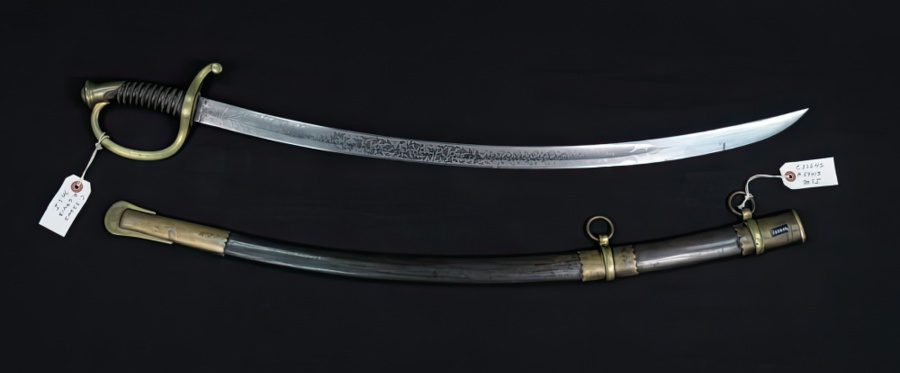
The Confederate Light Artillery Men carried a Southern-made copy of the U.S. Model 1840 Light Artillery Saber. It had a curved 32-inch blade, a leather grip with brass wire around it, and a knuckle bow ending in a Phrygian-helmet pommel. However, many soldiers found it too light to defend against a cavalry saber, so most were discarded in the early months of the war.
Model 1832 Foot Artillery Sword
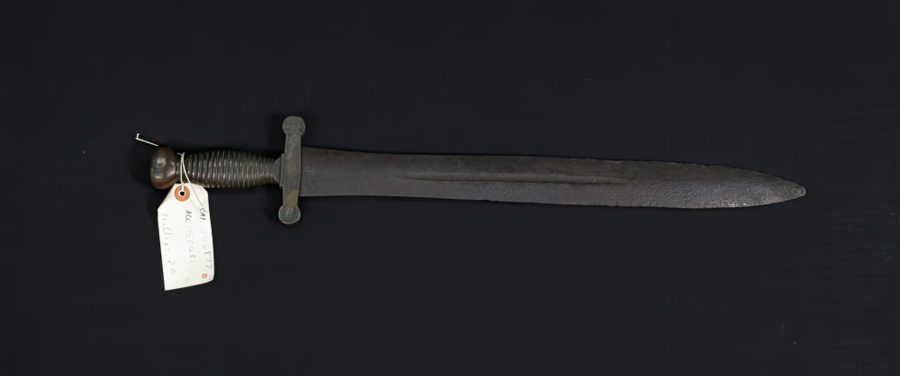
Heavy artillery units were equipped with a copy of the U.S. Model 1832 Foot Artillery Sword. The short sword was issued to the foot artillerymen to use against horses in an attack, though ideally, a revolver would be more suitable. It was based on the design of a French sword modeled from the classical Roman gladius.
The Model 1832 Foot Artillery Sword had a straight blade about 19 inches long, a crossbar handguard, and a scalloped brass hilt. It also had a leather scabbard with brass fittings. Southern makers primarily manufactured it, including The Confederate States Armory, E.J. Johnston & Co., and W.J. McElroy.
Confederate Naval Swords
Various swords were issued to the Confederate Navy, though they were already obsolete by the Civil War due to the widespread use of rifled cannons.
Confederate Naval Officer’s Sword
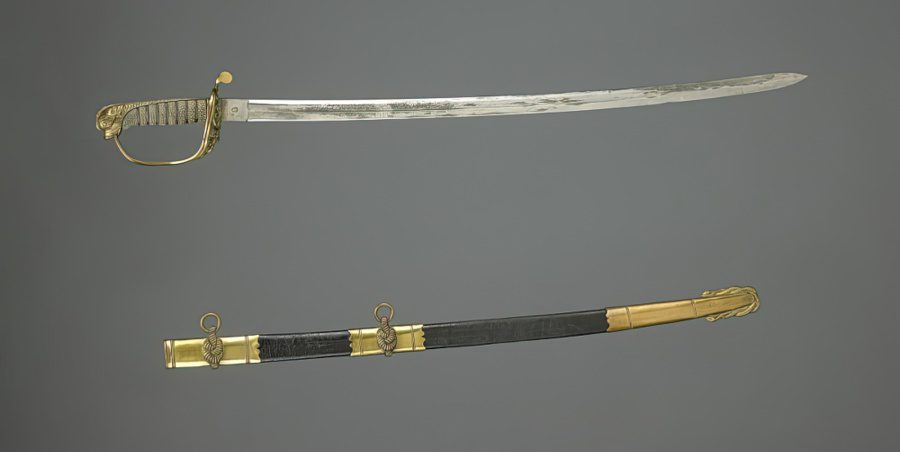
Most recognized for its unusual dolphin-head pommel, the Confederate Naval Officer’s Sword is among the rarest Confederacy’s edged weapons. It had a slightly curved blade, a brass guard with cast relief motifs, a scale-like backstrap, and sword mounts cast into rope knots. Many were manufactured in England by Mole & Son of Birmingham.
Confederate Naval Cutlass
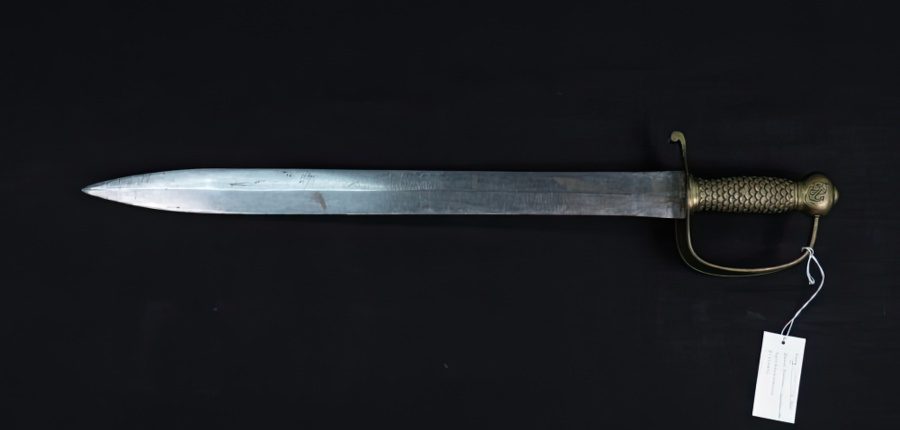
Unlike most known forms of cutlasses, the Confederate Naval Cutlass had a straight, double-edged blade. It had a scalloped or scaled grip and a D-shaped handguard. Most examples were manufactured by Leech & Rigdon for the Confederacy. Other types of Confederate Naval Cutlass have been associated with the CSS Florida.
Confederate Staff and Field Officer’s Sword

Confederate officers of major and above were allowed to wear this type of sword, and variations in design and level of finish were common. The Confederate Staff and Field Officer’s Sword has a slightly curved blade and gilded handguard, which features the CS pattern, usually with a five-pointed star.
Characteristics of the Confederate Sword
The Confederate forces used various swords, often copies of patented weapons or imported abroad. The quality and design of Confederate swords also reveal much about the combat experiences of the soldiers during the war.
Here are the general characteristics of the Confederate swords:
Metal and Construction
Confederate swords had varying quality due to their origin. Southern-made blades used by the Confederate forces were generally inferior to Northern-made U.S. Army weapons. Most had poor quality and clumsy designs due to manufacturing limitations in the South. Blades were often beaten out by hand, had uneven quality, and possibly had limited value in close-quarters combat.
Confederate sword manufacturers made copies of patented U.S. Army weapons, produced swords of their own design, and embellished captured swords. Boyle, Gamble, and Co. was the leading sword maker of the Confederacy. The others were Leech & Rigdon and W.J. McElroy, and the latter produced sturdy but unrefined swords.
The Confederate forces also had to depend on what they could capture from the enemies, as the Union troops were well-equipped. Many swords and sabers captured from Union troops were of better quality. Some German sword makers, who have always been known for producing high-quality blades, also exported swords to Confederate dealers during the American Civil War.
Blade Appearance
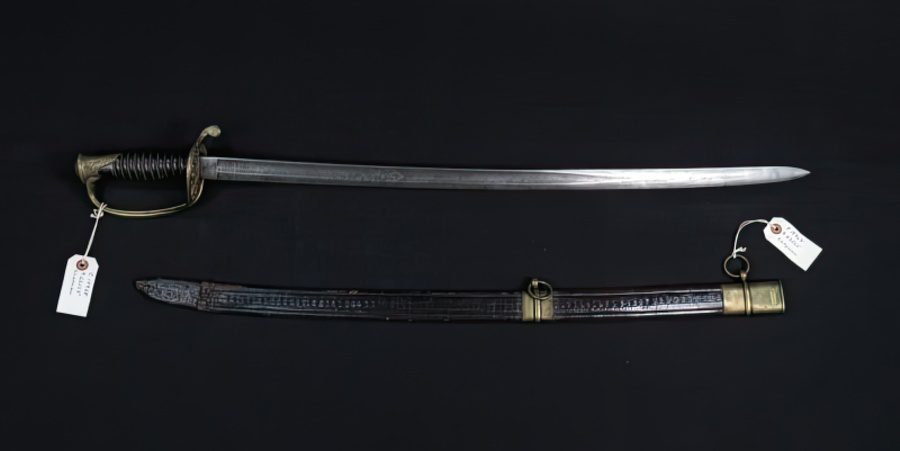
Many Confederate sword blades feature the symbols C.S. for Confederate States and trophies of Confederate flags, usually above crossed cannon. Others were also decorated with floral and oak-leaf designs. Also, Southern-made Confederacy sabers often had single-fullered blades or even flat, weaker than Northern-made weapons.
Size and Length
Confederate swords, and Civil War swords in general, greatly varied in length depending on the sword model. Most had an average blade length of 80 centimeters (32 inches) and an overall length ranging from 90 to 95 centimeters (35 to 37 inches). On the other hand, short swords had a blade length of 48 centimeters (19 inches) and an overall length of about 60 to 65 centimeters (23 to 25 inches).
Sword Mounting
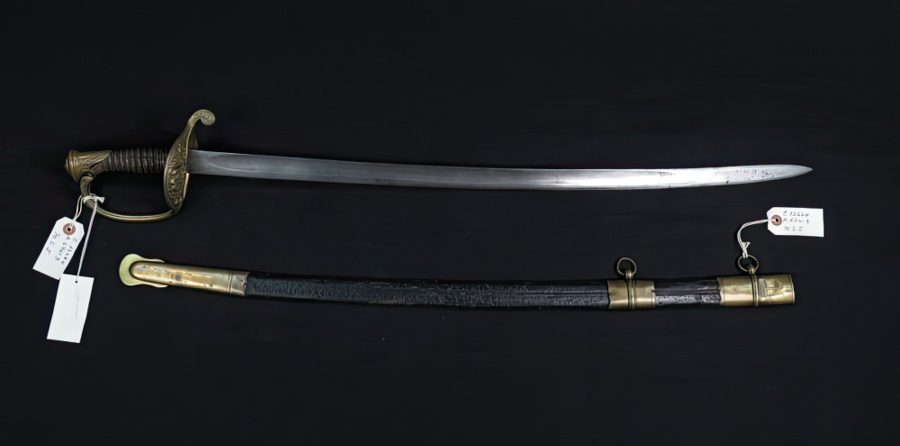
The grip, pommel, and guard of Southern-made Confederate swords were often crudely made. Scabbards were ideally made of iron, but Southern manufacturers lacked enough iron for scabbards and used brass instead. Senior Confederate officers usually had their own sword models and could opt for decorative designs to show their status and wealth.
The Confederacy in the American Civil War
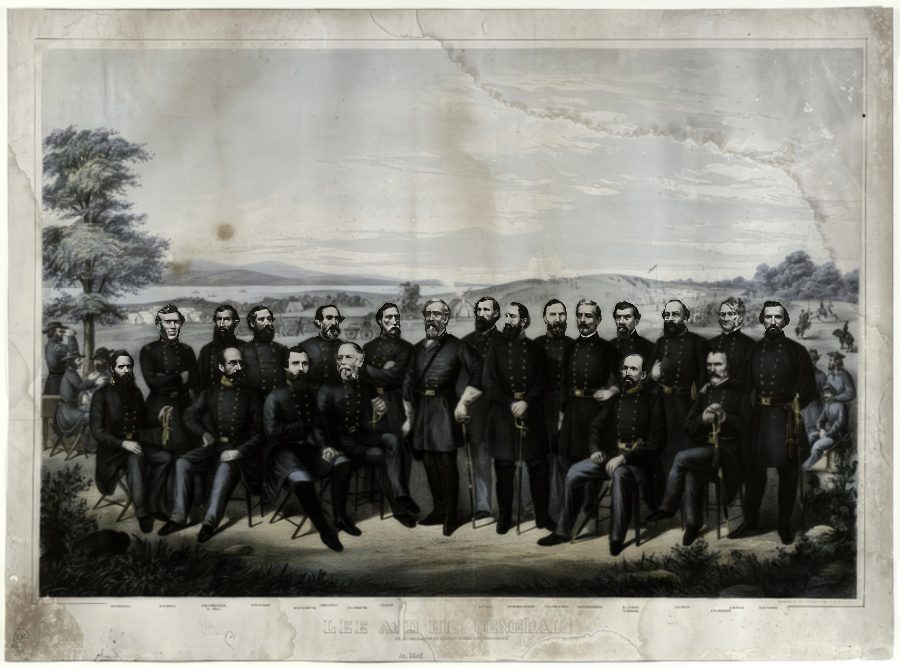
The American Civil War, which spanned from 1861 to 1865, was a conflict between the Northern and Southern US States due to issues of slavery. The Northern states, also known as the Union, wanted slavery to be abolished throughout the country. On the contrary, the Southern states, also known as the Confederacy, wanted to keep slavery as their primary labor force for farming their crops.
The Confederate States of America (C.S.A.), also called the Confederacy or the Rebels, comprised the 11 Southern states that broke away from the Union. However, it was never recognized as a sovereign nation. In April 1865, the American Civil War ended when Confederate General Robert E. Lee surrendered at Appomattox Court House.
History of the Confederate Swords
During the American Civil War, the Confederate swords mainly served as symbols of rank worn by officers. In fact, only a small percentage of casualties were due to a sword attack.
Uses of Confederate Swords in the American Civil War
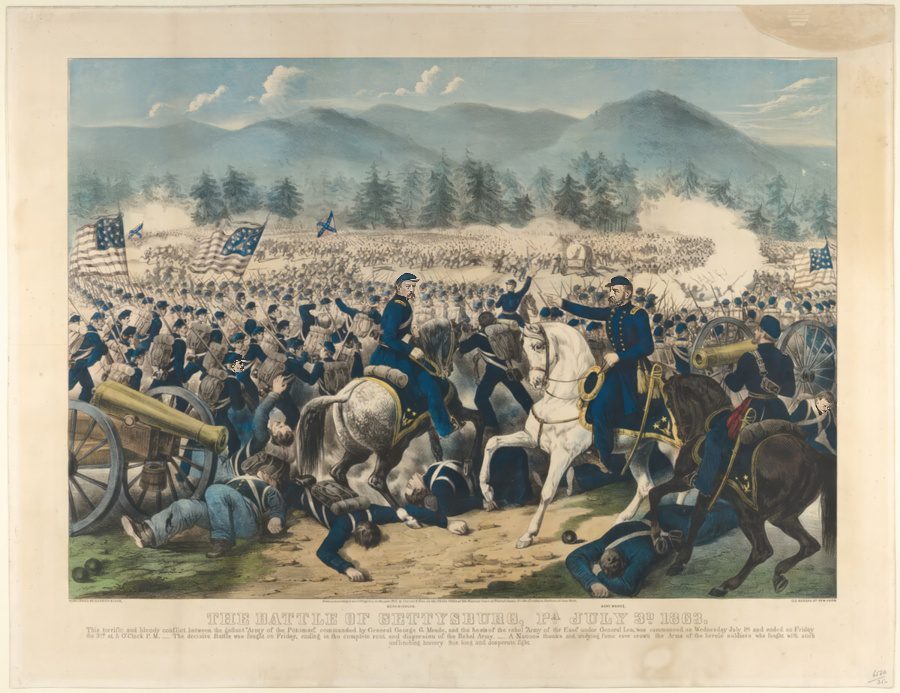
The cavalrymen used swords in mass charges, though the tactic eventually became impractical due to the widespread use of rifle and artillery fire. The Battle of Gettysburg is the most known saber-to-saber combat during the Civil War.
In the infantry, swords often distinguished the commanders in action. The Confederate officers often held their swords high to signal the direction of movement or give instructions to fire. However, the foot soldiers were more likely to fire their muskets in close-quarters combat than engaging in sword combat or bayonet fencing.
Confederate Swords and Other Weapons
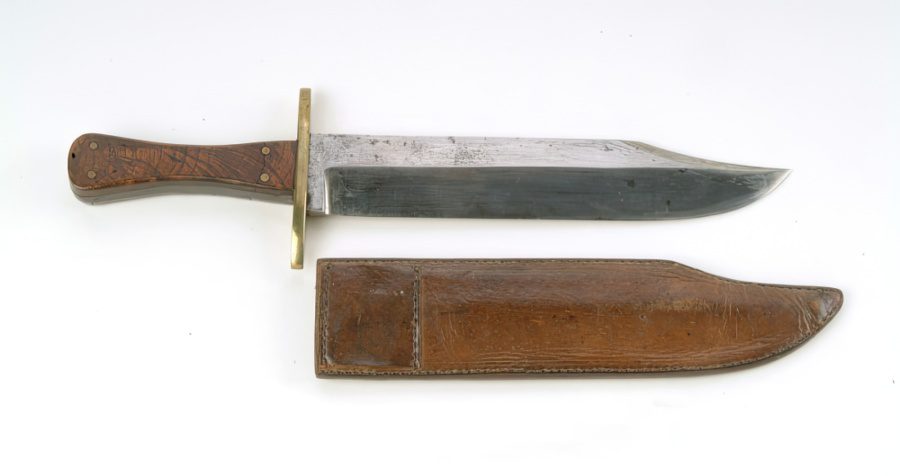
A major source of Confederate weaponry was swords and arms seized from Union soldiers. The Confederate forces also used short swords and knives, from spear-point to stabbing, and side knives. However, the most common use of bladed weapons was around the camp.
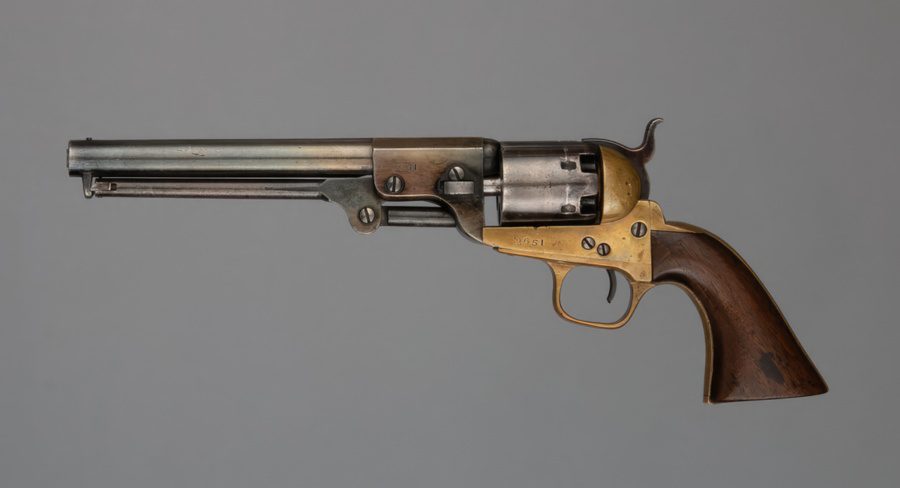
The Confederate officers and cavalrymen also carried revolvers, which were more effective than the traditional sword and less bulky. Other weapons included long guns, such as carbines, artillery musketoons, rifles, and muskets. Some were even issued with pikes before their rifles became available. The Confederate forces also used grenades, artillery volley guns, and ammunition.
Conclusion
In a war dominated by muskets and cannons, it is ironic that so much effort was put into manufacturing various swords. The Confederate swords primarily served as a badge of rank and had occasional use on the battlefield. The U.S. Civil War is one of the most memorable in American military history, making the Confederate swords highly sought-after by collectors.




